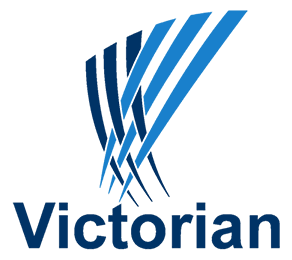ISO 45001 Certification: Occupational Health and Safety Management System
ISO 45001 is an international standard that establishes a framework for an Occupational Health and Safety Management System (OHSMS) within an organization. By providing a structured approach, ISO 45001 helps organizations proactively manage and improve the physical and mental well-being of their employees.
Implementing ISO 45001 demonstrates a company’s commitment to creating a safe and healthy workplace. It is widely regarded as a best practice for effectively managing occupational health and safety risks, reducing workplace incidents, and enhancing overall employee welfare.

What are the steps to get ISO 45001 Certification?



What are the benefits of implementation of ISO 45001 standard?
Understanding ISO 45001: A Framework for Occupational Health and Safety
ISO 45001 is an internationally recognized standard that outlines the requirements for establishing an Occupational Health and Safety Management System (OHSMS) within an organization. Its primary goal is to help organizations create a safe and healthy working environment for all employees and stakeholders.
Published by the International Organization for Standardization (ISO), ISO 45001 is globally accepted and enhances the credibility of an organization’s commitment to workplace safety. Its widespread recognition also makes it easier for organizations to gain international acknowledgment and trust.
One of the key strengths of ISO 45001 is its adaptability. It can be implemented by organizations of any size, type, or industry. The standard can be tailored to suit the specific needs of the organization, whether it operates locally or globally, and can also take into account geographical and cultural factors that influence workplace safety.
ISO 45001 emphasizes not only physical safety but also the mental well-being of employees. Mental health is a critical aspect of occupational health and safety, and organizations that prioritize it often see increased employee satisfaction and overall performance.
By embedding OHSMS at all levels of the organization, ISO 45001 helps build a culture of safety and trust. Employees are more confident and motivated, leading to improved productivity, better morale, and potentially higher revenue. A strong safety culture can also enhance an organization’s reputation, attracting both talent and business opportunities.
The implementation of ISO 45001 helps standardize safety protocols and regulations, addressing daily challenges faced by employees. It ensures that organizations comply with international safety standards and demonstrate their commitment to continuous improvement in occupational health and safety.
Ultimately, ISO 45001 fosters a healthier, more engaged workforce and a safer, more resilient organization. It creates a positive environment across departments, encouraging participation in company initiatives and strengthening the organization’s overall culture.
What is ISO 45001 certification in general?
High-Level Structure of ISO Standards and Key Clauses in ISO 45001
International standards published by the International Organization for Standardization (ISO) follow a unified format known as the High-Level Structure (HLS). Introduced in 2013, this structure provides a consistent framework comprising 10 standardized clauses, making it easier for organizations to implement and integrate various ISO management systems.
ISO 45001, which focuses on Occupational Health and Safety Management Systems (OHSMS), adopts this high-level structure. The standardized framework simplifies implementation for both employees and consultants by offering a clear and consistent approach. The key clauses of ISO 45001 include:
1. Context of the Organization
This clause involves identifying internal and external factors that can affect the OHSMS. Understanding the organization’s context helps in defining the scope and ensuring that all relevant issues are considered when designing the system.
2. Leadership
Leadership plays a critical role in the success of OHSMS. This clause ensures that top management demonstrates commitment by establishing clear policies, setting objectives, and defining roles and responsibilities. It emphasizes accountability and the promotion of a culture of safety throughout the organization.
3. Planning
Planning involves identifying risks and opportunities related to occupational health and safety. It includes setting objectives and determining actions to mitigate risks and enhance opportunities. The top management is actively involved in shaping these plans to ensure effective implementation.
4. Support, Operation, Performance Evaluation, and Improvement
Other clauses—such as support, operation, performance evaluation, and continual improvement—are equally important and build upon the foundation laid in the initial phases. They ensure that resources are available, processes are properly managed, performance is regularly reviewed, and improvements are consistently made.
It is important to note that explaining every aspect of ISO 45001 in a single overview is not possible due to the standard’s depth and complexity. For a more detailed understanding and expert guidance tailored to your organization’s needs, you can contact TCERTGLOBAL, a trusted provider of ISO consulting services.
